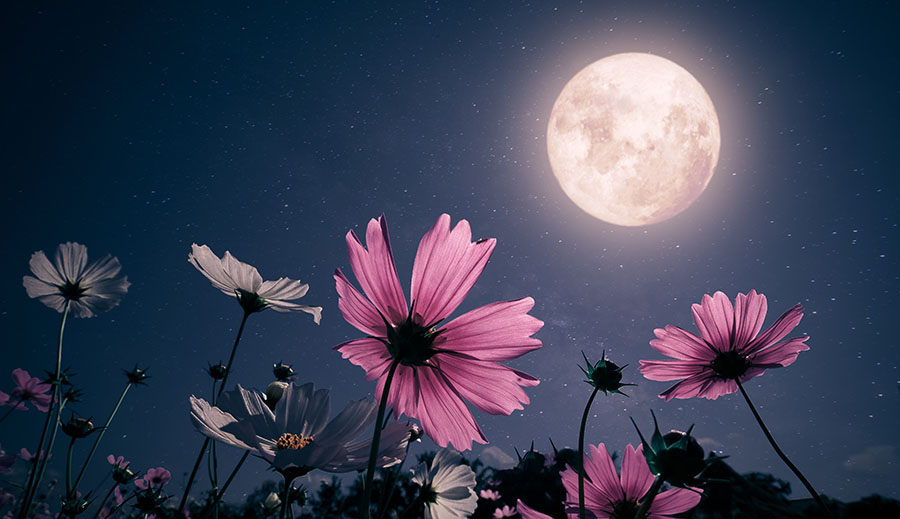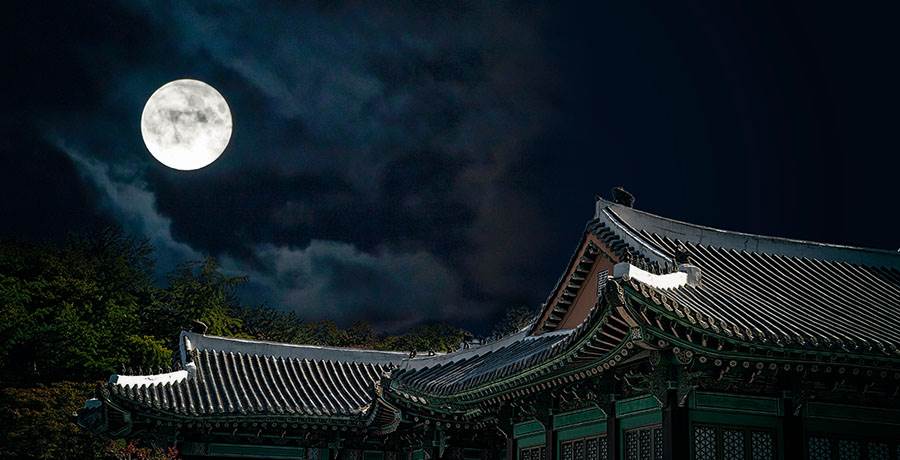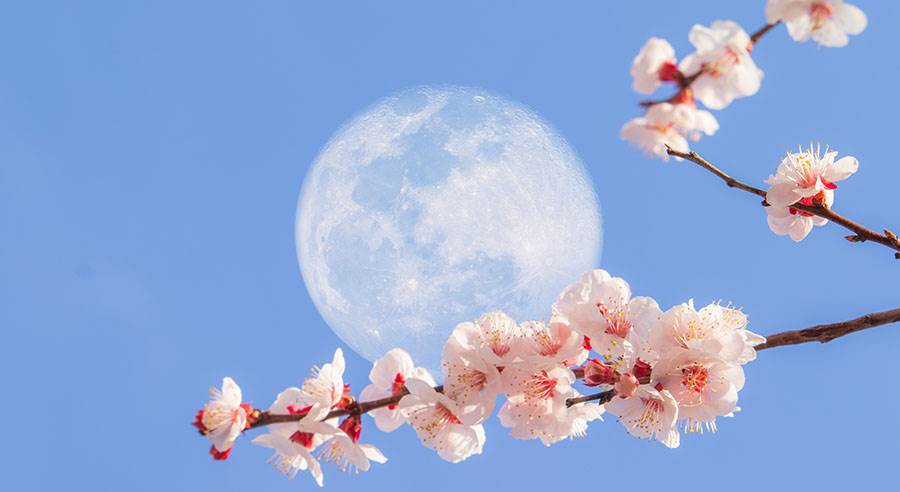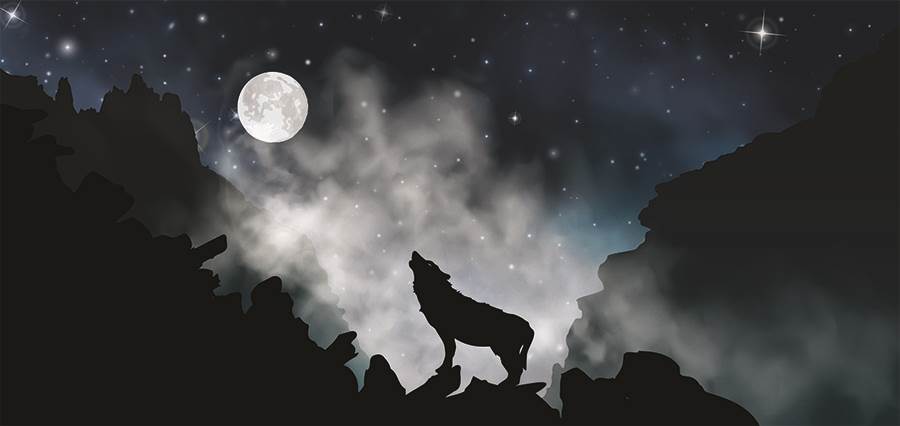The Mystical Moon: Unveiling the Full Moon's Cultural Significance by Psychic Sibyl
Date 8/29/2025
Explore More:
World Cultures Spirituality The Moon
The full moon has long been a source of wonder and intrigue for people worldwide. Its mesmerizing beauty and mysterious and incomprehensible nature have made the full moon a symbol of great cultural importance. The full moon has been revered and celebrated in many ways throughout ancient civilizations and cultures. Its impact on tides, agriculture, and astrology has also made it an essential and practical component of human existence. However, the full moon is remarkable because it is a universal bond connecting people across time and geography. This piece will delve into the mystical moon and unveil its cultural significance. Join me on a journey through history as we explore how the full moon has shaped our world.

The Full Moon in Ancient Mythologies
The full moon has long held a special place in the mythologies and beliefs of many ancient cultures. Among the most prominent are the ancient Greeks and the Norse, who had unique stories and legends surrounding the moon and its mystical powers. The full moon has significantly influenced many ancient civilizations' spiritual and cultural practices. Whether a source of fertility, protection, or spiritual guidance, the full moon has always held a special place in the hearts and minds of people worldwide. Even today, many cultures celebrate the full moon with rituals, ceremonies, and other traditions that pay homage to its power and significance.
In Greek mythology, the goddess Artemis was associated with the full moon, believed to be the goddess of the moon, fertility, and childbirth. As the moon reached its entire point in the sky, worshipers believed that Artemis would bless women with fertility and protect them during delivery. Many Greek women would offer prayers and sacrifices to Artemis during the full moon, hoping to receive her blessings and ensure a safe and healthy pregnancy.
In Norse mythology, Mani personified the full moon and was said to guide the moon chariot across the night sky. According to legend, Mani was responsible for creating the moon's phases, and he would ride his chariot across the sky each night, bringing light to the world and guiding sailors safely through the darkness. Many Norse cultures celebrated the full moon with rituals and ceremonies, offering prayers and sacrifices to Mani in the hopes of receiving his blessings and protection.
Despite their different beliefs and traditions, the Greeks and the Norse shared a deep reverence for the full moon and the powers it commonly believed to hold. Today, many people still look to the full moon as a source of inspiration, guidance, and spiritual connection, drawing on these ancient myths and legends to find meaning and significance in its glowing presence in the night sky.

Lunar Celebrations and Festivals
Lunar celebrations and festivals are an integral part of many cultures worldwide. One such festival is the Mid-Autumn Festival in China. They celebrated on the 15th of the eighth lunar month, usually in late September or early October. The festival is about unity, harmony, and family reunion to honor the moon's beauty and various phases. People celebrate the festival with their loved ones by eating mooncakes, lighting lanterns, and admiring the full moon.
Another lunar festival celebrated in India is Karva Chauth. Married Hindu women who fast and pray for their husband's well-being and long life celebrate this festival. The festival falls on the fourth day after the full moon in the month of Kartik. On this day, women dress up in their finest clothes and jewelry and observe a day-long fast without water or food. The woman breaks the fast after the moon appears in the sky, and the husband feeds his wife with water and a small meal.
In addition to these two festivals, there are many other lunar celebrations and festivals worldwide. Many lunar festivals involve traditional activities such as feasting, dancing, and lighting lanterns. The Moon Festival is celebrated in Vietnam by enjoying mooncakes and watching dragon and lion dances. In Korea, the Chuseok Festival involves visiting ancestral graves and sharing traditional food with family members. The Tsukimi Festival in Japan is celebrated by admiring the full moon and enjoying traditional foods such as rice dumplings and sake.
Lunar celebrations and festivals are a great way to unite people and celebrate the moon's beauty. These festivals have been observed for centuries and are essential to many cultures. Whether in China, India, Vietnam, Korea, or Japan, you will find a lunar festival you can participate in and enjoy with your loved ones.
Moon-Based Calendars and Lunar Phases
Throughout history, the moon has been a significant celestial body, influencing everything from agriculture to religion. For many cultures, it has also been a basis for timekeeping, with the lunar cycle as a natural calendar.
One example of a moon-based calendar is the Islamic calendar. This calendar is lunar, meaning that each month begins at the sighting of the new moon. This system has been used for centuries and is used today to determine the dates of Islamic holidays such as Ramadan and Eid al-Fitr.
Another example of a moon-based calendar is the Hebrew calendar. This calendar uniquely combines lunar and solar cycles to determine the dates of religious holidays. The Hebrew calendar has 12 lunar months, each lasting 29 or 30 days. Every few years, an extra day (or month) is added to the cycle to keep the lunar calendar in sync with the solar year.
Moon-based calendars have their advantages and disadvantages. One of the benefits of a lunar calendar is that it is easy to observe and track. The moon's phases are visible to the naked eye and can be a reliable timekeeper. Additionally, the lunar calendar is closely tied to the natural world and can be used to track seasonal changes.
However, lunar calendars also have their limitations. For example, a lunar month lasts approximately 29.5 days, meaning that a lunar year is only 354 days long. This calendar year is about 11 days shorter than a solar year, which is 365 days long. Over time, this difference can add up and lead to a misalignment between the lunar and solar calendars.
Despite these limitations, moon-based calendars continue to be used around the world. From the Islamic to the Hebrew calendar, these systems offer a unique perspective on timekeeping and a connection to the natural world. As we continue to explore the moon and other celestial bodies, it will be interesting to see how these calendars evolve and adapt to discoveries.

Healing and Moon Rituals
The moon has long been associated with healing and rejuvenation. Many believe that the moon's energy can help cleanse the body and mind and that moon rituals can be a powerful tool for setting intentions and manifesting positive change. You can also work with the moon in its different phases and fine tune your ritual to your intentions. We will explore the benefits of moon bathing and moon rituals and provide a step-by-step guide for incorporating these practices into your daily routine.
Moon bathing is a simple and effective way to harness the moon's energy for healing and rejuvenation. To moon bathe:
- Find a quiet and secluded spot to see the moon.
- Sit or lie down and allow the moon's energy to wash over you.
- Breathe deeply and focus on your intention to release any negative energy or emotions weighing you down.
As you moon bathe, you may also want to incorporate other healing practices, such as aromatherapy, meditation, or yoga. Experiment with different combinations of methods to find what works best for you.
Moon rituals are another powerful way to harness the moon's energy for healing and transformation. One popular moon ritual is charging crystals, which involves placing your crystals outside under the full moon's light to cleanse and recharge their energy.
Another familiar moon ritual is setting intentions for positive change. To do this:
- Find a quiet and comfortable place to focus on your intention.
- Write them down on paper and place them outside under the full moon's light.
- As you do this, visualize them coming to fruition and feel the moon's energy supporting you.
Incorporating healing and moon rituals into your daily routine can be a powerful way to promote balance, clarity, and inner peace. Whether you choose to moon bathe, charge crystals, or set intentions under the full moon's light, remember to approach these practices with an open heart and an open mind. These simple yet powerful rituals can profoundly impact your well-being with time and practice.

Modern Interpretations and Pop Culture
Werewolves and supernatural phenomena have been a recurring theme in literature, films, and music for centuries. The idea of transformation, animalistic behavior, and the fear of the unknown has captivated audiences for generations. Modern interpretations of these themes have brought new life to the werewolf legend, with pop culture taking it to new heights.
One of the most iconic werewolf films of all time is "An American Werewolf in London," released in 1981. The film's groundbreaking special effects, dark humor, and thrilling storyline made it an instant classic. This film paved the way for other werewolf movies such as "The Howling" and "Ginger Snaps."
In music, werewolves have been the subject of many songs, the most famous being Michael Jackson's "Thriller." The music video for "Thriller" featured the iconic transformation scene where Jackson turns into a werewolf. The song has since become a Halloween classic, played yearly at parties and events.
Werewolves have also become a popular theme in literature, with authors such as Stephanie Meyer and Anne Rice incorporating them into their stories. Meyer's "Twilight" series features a werewolf pack as one of the main plot points, while Rice's "The Wolf Gift," tells the story of a man who becomes a werewolf after being bitten.
Modern interpretations of werewolves have taken on a new twist, with shows like "Teen Wolf" and "True Blood" bringing the creatures to a new generation. "Teen Wolf" features a high school student who discovers he is a werewolf and must navigate the challenges of keeping his secret while also dealing with teenage drama. "True Blood" takes a more adult approach, with werewolves being part of a larger supernatural world that includes vampires, witches, and shape-shifters.
Werewolves and supernatural phenomena have become a staple in pop culture, with new interpretations and stories told yearly. Whether in literature, films, or music, the fear of the unknown and the thrill of transformation continue to captivate audiences of all ages.
In conclusion, the full moon has a deep-rooted connection with humanity that transcends time and unites cultures worldwide. It serves as a reminder of our shared humanity and desire to connect with the cosmos. Ancient mythologies worldwide have portrayed the moon as a powerful force influencing human behavior and emotions. Lunar celebrations and festivals have been an integral part of many cultures, and people have been performing moon rituals for healing and spiritual purposes for centuries. Whether through meditation, journaling, or simply spending time in nature, these rituals have helped connect individuals with the world around them on a deeper level. Today, modern interpretations of the full moon are prevalent in pop culture, and it continues to fascinate people across the globe. The full moon symbolizes hope, unity, and humans' bond with nature. Its mysterious allure and undeniable beauty continue to captivate and inspire us today.
 Get a Reading with Sibyl x4954
Get a Reading with Sibyl x4954
Sibyl has spent over twenty years refining my psychic abilities, mastering the mystical arts of clairvoyance, clairaudience, clairsentience, mental mediumship, trance mediumship, physical mediumship, and channeling. These abilities allow me to unravel your past, present, and future mysteries. She is not just a conduit for mystical energies but also a scholar-philosopher with profound subtlety and insight.
